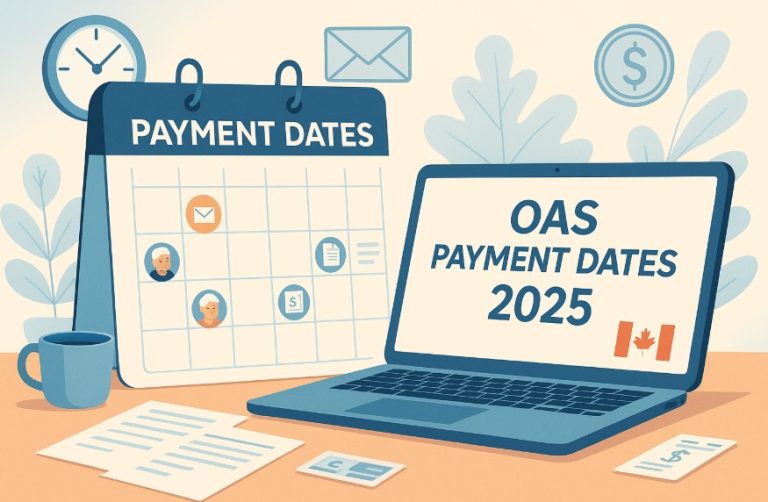Are you an Ontario resident looking to reduce your yearly living expenses? If you’re paying rent, property taxes, or energy costs, you might be eligible for valuable financial relief through the Ontario Energy and Property Tax Credit (OEPTC). Administered by the Canada Revenue Agency (CRA), this credit is part of the Ontario Trillium Benefit (OTB) program and provides financial support for low- to moderate-income individuals and families across the province.
The cost of living in Ontario continues to rise. That’s why understanding and taking advantage of the OEPTC can be a critical step toward easing your financial pressure. Whether you’re a student, a senior, a renter, or a homeowner, this credit could mean hundreds of dollars back in your pocket.
This blog will guide you through what the OEPTC is, who qualifies, how to apply, how much you can receive, and more. Let’s break it all down in simple terms so you can confidently claim your credit.
What Is the Ontario Energy and Property Tax Credit (OEPTC)?

The Ontario Energy and Property Tax Credit (OEPTC) is a refundable tax credit available to eligible Ontario residents to help offset the costs of energy and property taxes. It is designed specifically to provide relief to low- and moderate-income individuals and families who face high housing and utility costs.
The OEPTC is a part of the Ontario Trillium Benefit (OTB), which also includes:
- Ontario Sales Tax Credit
- Northern Ontario Energy Credit
The credit consists of two main components:
- Energy Component: Helps with the portion of sales tax on energy
- Property Tax Component: Offers relief from property taxes paid
Payments are typically made monthly and start in July following the assessment of your tax return. However, if your total entitlement is $360 or less, you’ll receive the entire amount as a lump-sum payment in the first OTB payment month.
You do not need to calculate the credit yourself. The CRA does it for you once you file your income tax return and complete the relevant sections of Form ON-BEN. The OEPTC is vital for Ontario residents facing ongoing cost-of-living increases and offers a reliable form of tax relief throughout the year.
Who Can Apply for the OEPTC?
If you’re wondering whether you qualify for the OEPTC, there are specific criteria you need to meet. This credit isn’t just for homeowners, it also applies to renters, seniors, long-term care residents, and individuals living on reserves.
To be eligible for the 2025 OEPTC, you must:
- Be a resident of Ontario on December 31, 2024
- Be at least 18 years old before June 1, 2026, or
- Have had a spouse or common-law partner on or before December 31, 2024, or
- Be a parent who lived or previously lived with your child
For the energy component, you may be eligible if one of the following applied to you in 2024:
- You or someone on your behalf paid rent for your principal residence in Ontario
- You or someone on your behalf paid property tax for your principal residence
- You lived on a reserve in Ontario and paid for home energy costs
- You lived in a public or non-profit long-term care home and paid for accommodation
You must also be a resident of Ontario at the beginning of each month to receive that month’s payment. Note that if you were confined to a correctional institution for over 90 days, you may not be eligible for payments during that period. Meeting even one of the eligibility conditions means you should consider applying to avoid missing out on this credit.
How Do You Apply for the OEPTC?

If you’re looking to claim the Ontario Energy and Property Tax Credit (OEPTC), the good news is that the process is relatively simple, but it requires attention to detail. You must apply through your annual income tax return, and even if you don’t owe taxes or earn income, filing is still necessary to qualify for this credit.
Here’s a clear, step-by-step guide to help you apply for the OEPTC properly:
Step 1: File Your 2024 Income Tax and Benefit Return
The very first step is to complete and submit your 2024 income tax and benefit return. This applies to everyone, even if you don’t have income or taxes owing. Without filing this return, you cannot receive the OEPTC.
Step 2: Complete Form ON-BEN
Included in your Ontario tax package, Form ON-BEN is officially known as the “Application for the Ontario Trillium Benefit and Ontario Senior Homeowners’ Property Tax Grant.” This form is essential, as it covers multiple provincial tax benefits, including the OEPTC.
Step 3: Tick the Correct Box
On Form ON-BEN, make sure you tick the box next to code 61020. This indicates that you’re applying for the Ontario Energy and Property Tax Credit specifically. Missing this checkbox may mean your application won’t be processed for the credit.
Step 4: Fill Out the Required Fields Based on Your Situation
You’ll need to provide accurate information based on your housing and energy expenses in 2024.
Here’s what to include:
- Box 61100: Enter the total rent paid for your principal residence in Ontario during 2024. This can include rent paid by you or on your behalf.
- Box 61120: Report the property tax amount actually paid on your Ontario home in 2024. If any portion was deferred by your municipality, do not include that deferred amount.
- Box 61140: Tick this box if you lived in a recognised Ontario university, college, or private school residence during the year.
- Box 61210: Include any energy costs paid for your primary residence located on a reserve in Ontario. These can include electricity and heating expenses.
- Box 61230: Enter the amount paid for accommodation if you lived in a public or non-profit long-term care facility in Ontario in 2024.
Make sure all these entries reflect actual amounts paid. Over-reporting or incorrect entries can delay your application or lead to errors in your entitlement calculation.
Step 5: Submit the Form Along with Your Tax Return
After completing Form ON-BEN and your income tax return, submit them together to the Canada Revenue Agency (CRA). If you’re filing online, ensure the form is included in your electronic submission. If you’re filing by mail, make sure the completed form is attached securely to your return.
Step 6: Wait for CRA Assessment
Once your tax return and Form ON-BEN are received, the CRA will assess your eligibility. You don’t need to calculate the credit yourself, the CRA will determine your entitlement based on your income, living situation, and the expenses you’ve reported.
If you qualify, your OEPTC amount will be combined with other credits (like the Ontario Sales Tax Credit and Northern Ontario Energy Credit, if applicable) and paid out as part of the Ontario Trillium Benefit (OTB). Payments typically begin in July and are issued monthly, unless you qualify for a lump sum.
Submitting a complete and accurate application is key to ensuring you receive the credit you’re entitled to without unnecessary delays or errors. Double-check your form before filing, and consider keeping records of your rent, energy, and tax payments in case verification is needed later.
What Expenses Qualify for the OEPTC?

Understanding which expenses count toward the OEPTC is essential for receiving the maximum credit available to you. Eligible expenses include rent, property tax, energy costs, and accommodation in care homes, among others.
Rent and Property Taxes
If you rented your principal residence in Ontario in 2024 and that rent was subject to municipal or education property tax, you can include that rent when applying. Similarly, if you owned your home and paid property taxes, you are also eligible under the property tax component.
You must have either paid the rent or property taxes yourself or had it paid on your behalf. If your rent was subsidised or included other services, only the portion attributed to rent/property tax should be reported.
Long-term Care Accommodation
If you lived in a public or non-profit long-term care home in Ontario and paid accommodation fees, these costs qualify under both the energy and property tax components. The CRA requires that these accommodation fees were paid by or on behalf of the resident.
Ensure that your accommodation receipts clearly outline the amounts paid and the period covered.
Energy Costs on Reserves
Residents who lived on a reserve in Ontario and paid home energy costs like electricity or heating for their principal residence are eligible for the energy component of the OEPTC. You must provide proof of these payments, such as utility bills or statements.
This applies only if the residence is on a designated reserve and you were responsible for the energy costs.
Living in Designated University/college Residences
If you lived in an officially recognised university, college, or private school residence in Ontario in 2024, you may qualify for the property tax component. Tick the appropriate box on Form ON-BEN to include this in your claim.
You must be able to confirm your residence in an eligible institution for the tax year in question. Reporting these expenses accurately ensures that the CRA calculates your entitlement fairly and promptly.
How Much Can You Receive from the OEPTC?
The amount you can receive through the Ontario Energy and Property Tax Credit (OEPTC) is determined by several key factors. These include your adjusted family net income, age, marital status, and the actual amount of rent, property tax, energy, or accommodation costs you paid in 2024.
Your place of residence, such as whether you lived on a reserve, in a designated educational institution, or in a long-term care home, can also affect your entitlement.
Here is a breakdown of the maximum OEPTC amounts for the 2025 benefit year based on applicant type:
| Applicant Type | Energy Component | Property Tax Component | Maximum Total |
| Non-Senior | $285 | $998 | $1,283 |
| Senior | $285 | $1,176 | $1,461 |
These amounts represent the highest possible credits you could receive, but the actual payment will be reduced as your income increases beyond a certain threshold.
Use this table as a reference point when estimating your eligibility. The CRA will calculate your exact entitlement after assessing your income tax return and the information you provide on Form ON-BEN.
Being aware of these figures helps you set realistic expectations and ensures you understand how much support may be available to you through this program.
When and How Will You Receive the OEPTC Payment?

Once your eligibility is confirmed, the Canada Revenue Agency (CRA) will issue your OEPTC payments as part of your Ontario Trillium Benefit. This benefit is typically paid in monthly instalments.
To receive payments:
- Your 2024 tax return must be assessed by June 19, 2025
- Payments will begin July 10, 2025, and continue on the 10th of each month
- If your return is assessed after June 19, your first payment may be delayed by 4 to 8 weeks
- The rest will follow monthly once your assessment is complete
If your annual OEPTC amount is $360 or less, it will be issued as a lump-sum payment in the first OTB payment month. Payments are made through direct deposit if you’ve previously used this option with the CRA. Otherwise, they are issued by cheque. Receiving your payments on time relies heavily on ensuring your tax return is filed accurately and early.
What If You’re Married or Have a Common-Law Partner?
Being married or in a common-law relationship affects how you apply for the OEPTC. Only one spouse or partner needs to apply for the credit, but there are some conditions you must be aware of.
- If only one of you is 64 or older, that person must be the one to apply
- The spouse applying must also complete the ON-BEN form and include the partner’s net income
- The same person must apply for the Ontario Senior Homeowners’ Property Tax Grant and the Northern Ontario Energy Credit if eligible
This ensures your household’s benefits are calculated correctly and efficiently. Failing to coordinate applications can result in delayed or reduced credits. Always communicate with your partner to determine who is best suited to apply, based on age, income, and eligibility for other benefits.
How to Avoid Mistakes When Applying?
Submitting an accurate application is essential to avoid processing delays or denial of your OEPTC claim. Mistakes can cost you both time and money.
To avoid common errors:
- Double-check all figures reported for rent, property tax, or energy costs
- Ensure Form ON-BEN is completed and attached to your return
- Tick the appropriate boxes for your housing situation
- Only report amounts actually paid, not deferred or subsidised costs
- Use accurate and up-to-date records from landlords or municipalities
If you’re unsure about a section of the form or your eligibility, consult a tax advisor or use online government resources. Accuracy is the key to smooth processing and timely payments.
What Other Tax Credits Can You Get with the OEPTC?

The OEPTC is only one part of the Ontario Trillium Benefit, which is a combination of three tax credits administered by the CRA.
In addition to the OEPTC, you may also qualify for:
- Ontario Sales Tax Credit: Helps offset the sales tax you pay on goods and services
- Northern Ontario Energy Credit (NOEC): For residents of Northern Ontario who face higher energy costs
- Ontario Senior Homeowners’ Property Tax Grant: Provides additional support for eligible senior homeowners
These credits are combined into one monthly or lump-sum payment, known as the OTB. You apply for all of them at once through Form ON-BEN. Maximising your return means understanding all the credits available to you and checking all the right boxes.
Maximise Your Ontario Tax Benefits
Filing for the Ontario Energy and Property Tax Credit is an excellent way to reduce the financial burden of housing and utility costs in Ontario. Whether you are a low-income renter, a senior homeowner, or someone living in a designated residence, you have access to meaningful relief through the OEPTC.
To make the most of your tax benefits:
- File your tax return early
- Complete Form ON-BEN with accurate information
- Claim all applicable credits under the Ontario Trillium Benefit
- Use direct deposit for faster payments
- Seek help from tax experts if needed
Take advantage of the support available and make every dollar count. Every benefit adds up when managing living expenses in today’s economy.
Conclusion
The Ontario Energy and Property Tax Credit is one of the most effective tools to ease the burden of housing and energy expenses for Ontario residents. Whether you’re a renter, homeowner, senior, or living in special housing situations, the OEPTC is designed to help you.
By understanding your eligibility, applying correctly, and claiming all related credits, you can reduce your tax burden and improve your financial wellbeing. Don’t leave money on the table, check your eligibility and apply today.
FAQs
Can I get the OEPTC if I live with my parents?
Yes, if you meet the age or dependent criteria and paid rent, you may still be eligible. The key is that the housing expense must be paid by or for you.
Do I need to apply every year for OEPTC?
Yes, you must file your income tax return annually and complete Form ON-BEN to be considered.
Can I still apply if I missed the tax deadline?
You can still apply by filing a late return, but your payments may be delayed.
Is OEPTC considered taxable income?
No, the OEPTC is a refundable tax credit and is not included in your taxable income.
Will receiving OEPTC affect my other benefits?
No, receiving the OEPTC does not negatively affect your eligibility for other government benefits.
What if I move during the year?
You must be a resident of Ontario at the start of each month to receive that month’s payment, so inform CRA if you move.
How can I check the status of my OEPTC payment?
You can check your payment status through CRA’s My Account service or by calling their helpline.




